Thick chewy udon noodles served in a rich, fragrant curry soup! This Japanese Curry Udon will satisfy your noodles craving in an instant. Bonus: it’s simple enough to throw together on a busy weeknight.
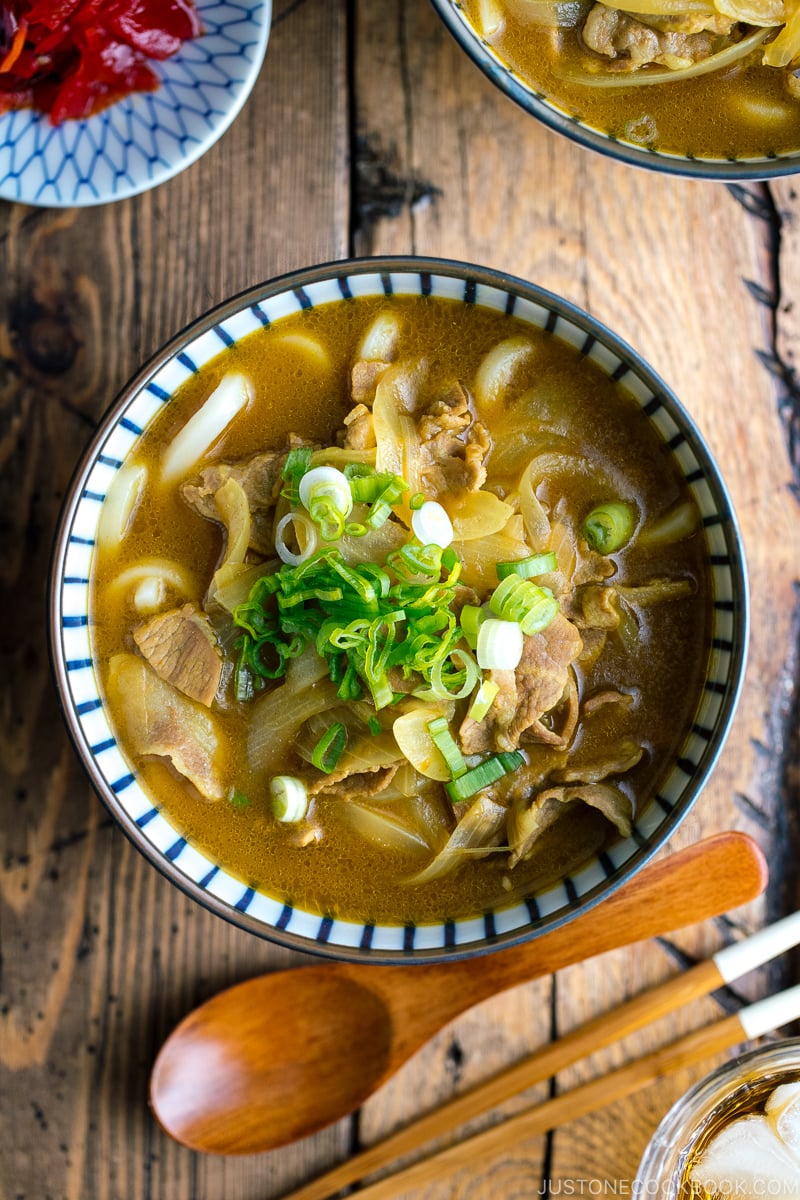
Curry Udon (カレーうどん) has been a popular menu item in Japan for a long time. It is lesser-known compared to Curry Rice, but the creamy curry is just as fulfilling when you enjoy it with udon.
And to me, the silky noodles have a way to soothe the soul in a comforting way unlike the other. When you blanket it with a rich curry soup, you just want to grab your chopsticks and slurp away.
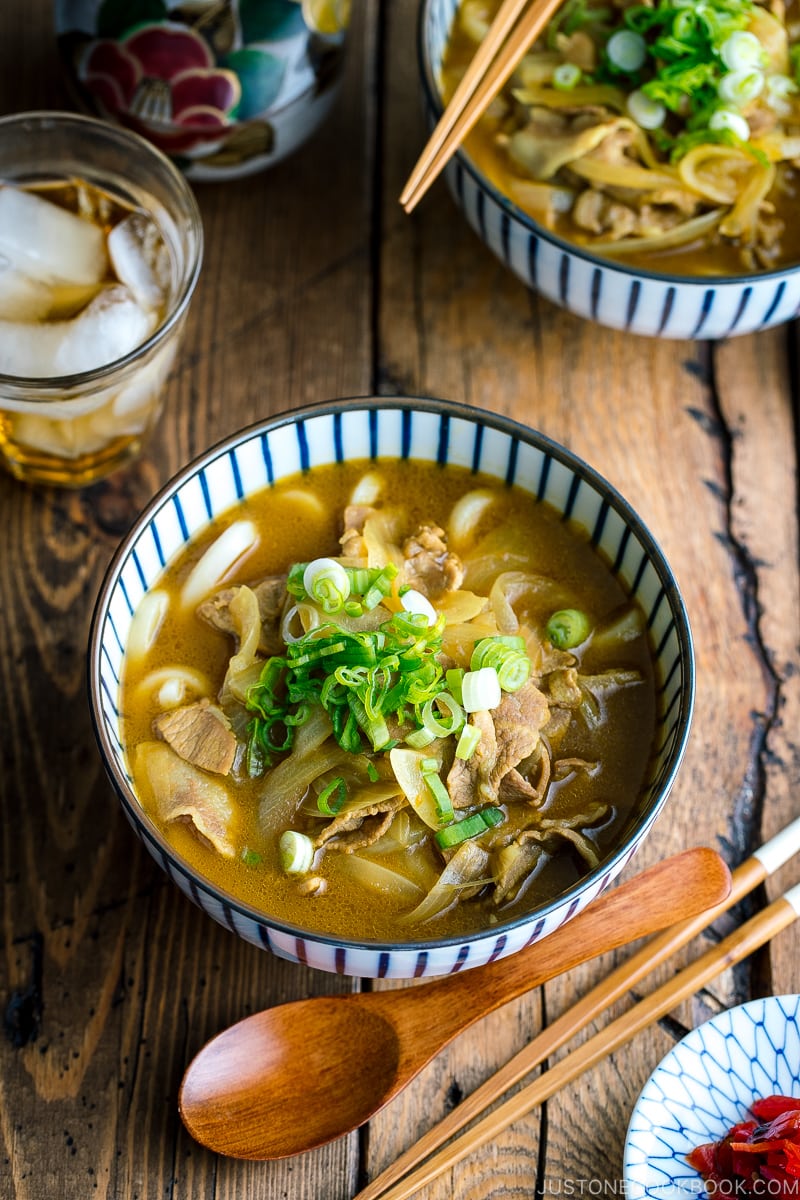
How to Make Curry Udon
Ingredients You’ll Need
- Your choice of protein – I used thinly sliced pork loin in the recipe as it cooks in seconds, but feel free to use your choice of protein such as chicken, beef, seafood, or tofu.
- Onion
- Green onion
- Udon noodles – More about it below.
- Dashi (Japanese soup stock) – homemade, which takes just 30 minutes, or dashi packet, or dashi powder). For vegans/vegetarians, make Vegan Dashi.
- Japanese curry roux – More about it below.
Overview: Cooking Steps
- Make dashi.
- Stir fry the onion and your choice of protein in the frying pan.
- Add the dashi and curry roux in the frying pan.
- Cook up udon noodles in a separate pot.
- Assemble drained udon noodles and curry soup in a serving bowl.
A satisfying noodle dish whipped up in under 30 minutes! This curry udon is rich and flavorful, with just a tinge of sweetness in each spoonful.
What is Japanese Curry Roux
Since the Japanese modify the food from other cuisines to suit their palate, you can expect Japanese curry to be quite different from Indian curries or Thai curries. It is thicker, milder, and sweeter, with a stew-like consistency. An ideal curry for curry beginners, or for people who prefer a gentler, sweeter flavor.
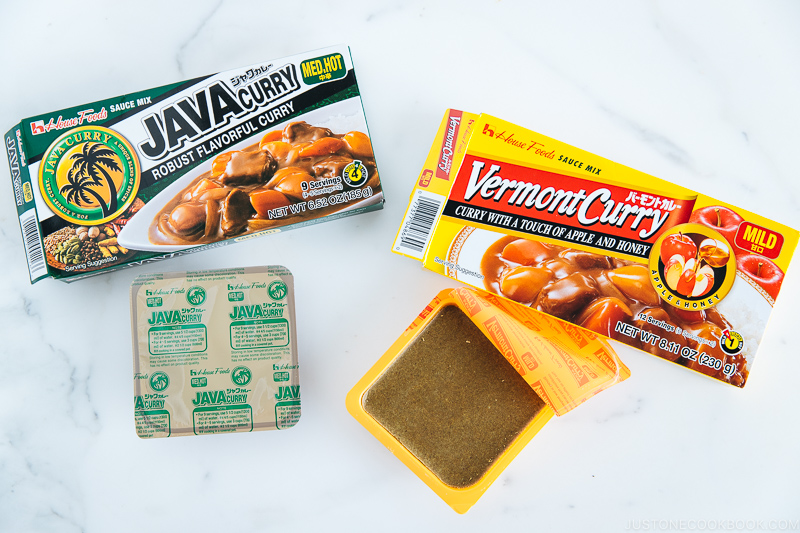
To make the curry soup, we’ll need to make curry roux. Homemade curry roux from scratch is, of course, the best, but there’s always an option of using the convenient store-bought curry roux when needed.
This is going to be a quick curry recipe, so I take the easy route this time. Nowadays, you can even find the rectangular packages of Japanese Curry Roux sold at major American grocery stores. Look for them at the Asian/ global food aisle.
Which Udon Noodles to Pick?
Thick, chewy, slippery udon noodles are so delicious! You can buy frozen, refrigerated, or dried udon noodles at Japanese or Asian grocery stores, and refrigerated ones in American grocery stores.
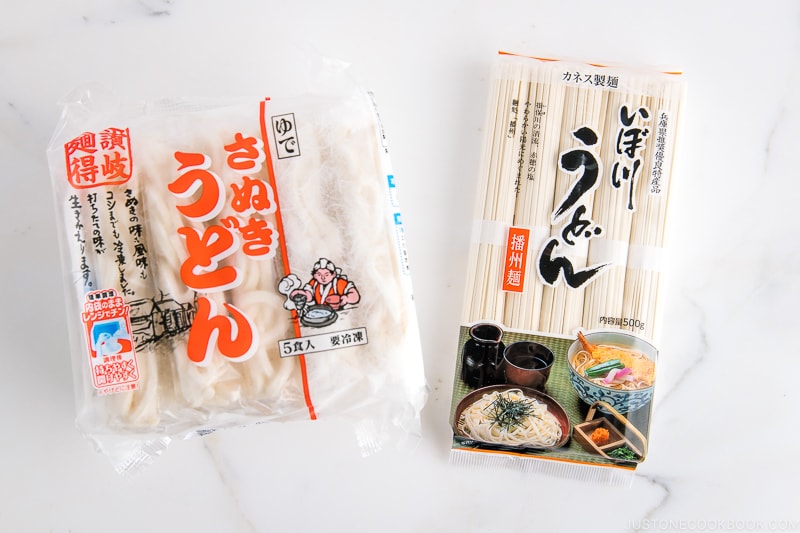
However, I only recommend getting frozen ones (choose one that says “Sanuki udon”) or dried udon noodles as they have a better texture than the refrigerated ones.
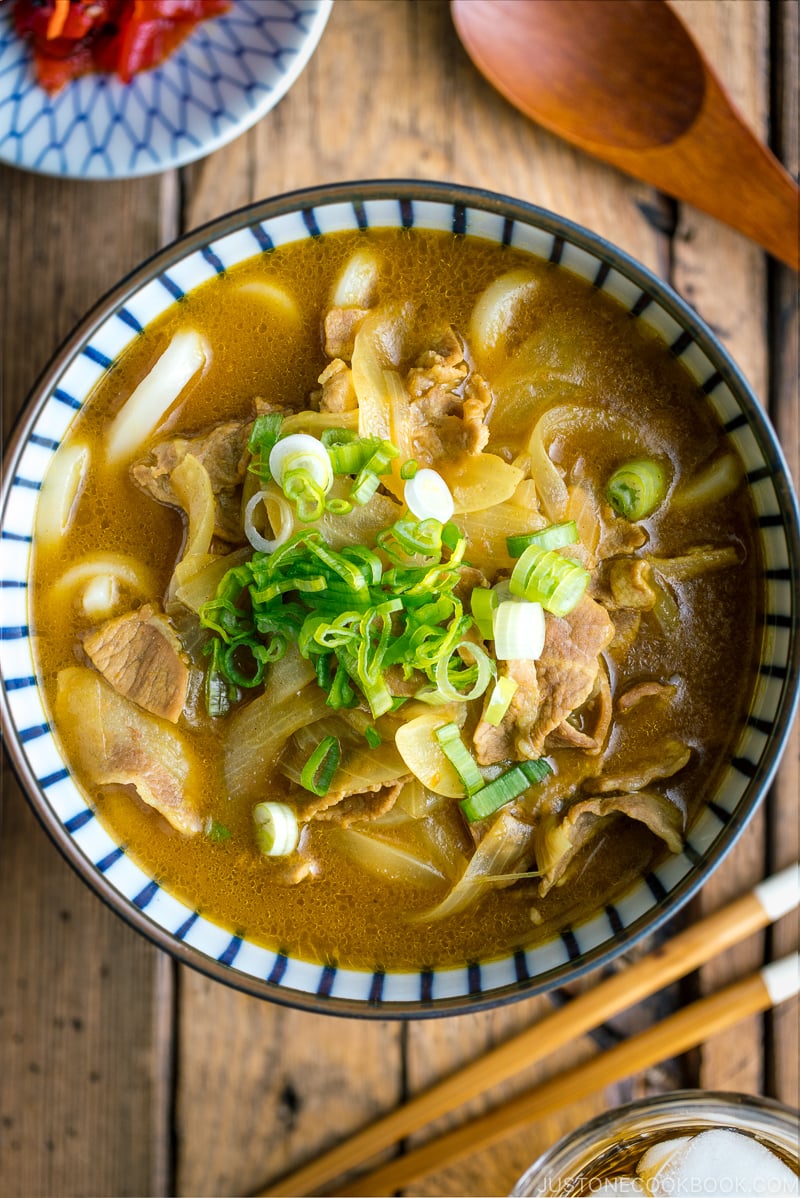
Make This Cold Curry Udon in the Summertime!
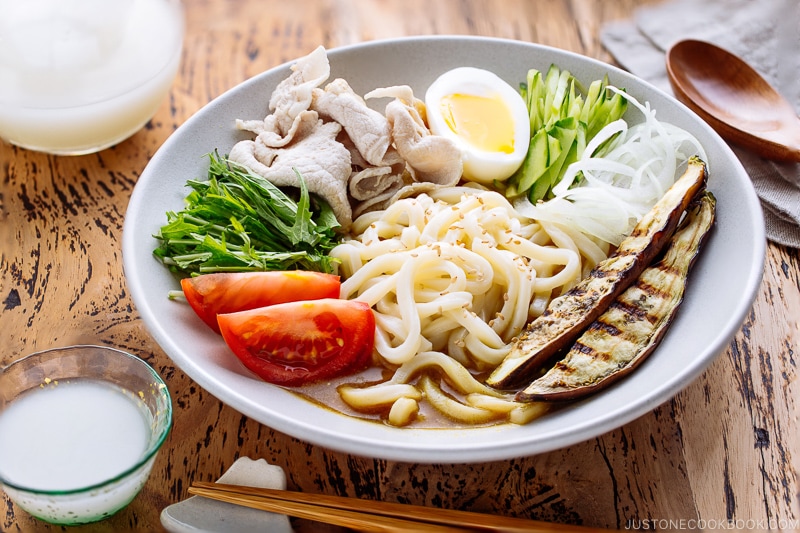
Oh by the way, if it’s in the middle of summer, try Cold Curry Udon!
Other Less-Known Curry Recipes
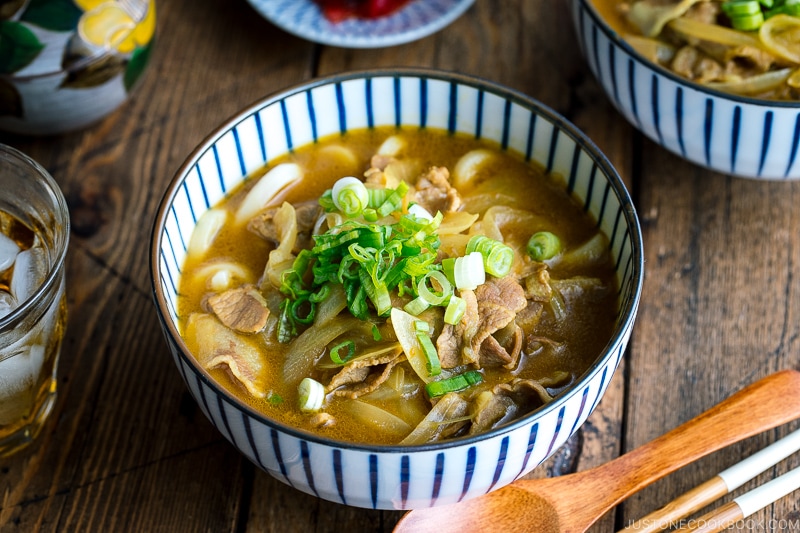
Wish to learn more about Japanese cooking? Sign up for our free newsletter to receive cooking tips & recipe updates! And stay in touch with me on Facebook, Pinterest, YouTube, and Instagram.
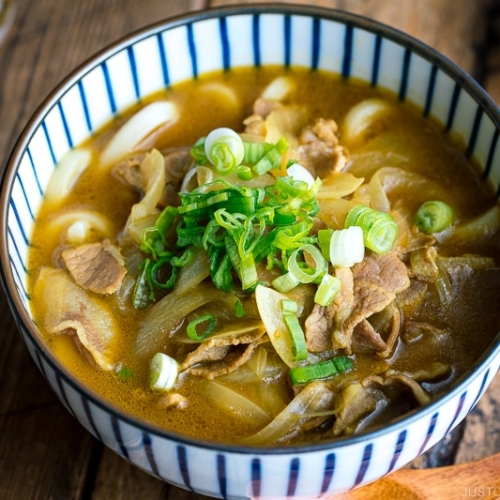
Curry Udon
Video
Ingredients
- ½ onion (5.7 oz, 162 g)
- 2 green onions/scallions (for garnish)
- 1 Tbsp neutral oil
- 6 oz thinly sliced pork loin (cut into bite-sized pieces; you can substitute your choice of protein)
- 1 Tbsp sake
- 3 cups dashi (Japanese soup stock) (use standard Awase Dashi, dashi packet or powder, or Vegan Dashi)
- 2 cubes Japanese curry roux (2 oz, 50 g; or make homemade Japanese Curry Roux)
- 2 tsp soy sauce
- 2 servings udon noodles (1.1 lb, 500 g frozen or parboiled udon noodles; 6.3 oz, 180 g dry udon noodles)
Instructions
- Gather all the ingredients. Break the boxed roux into cubes and use 2 cubes Japanese curry roux (keep the leftovers in an airtight container and store in the refrigerator/freezer for 1–3 months). Prepare 3 cups dashi (Japanese soup stock) using your preferred method.

- Thinly slice ½ onion and 2 green onions/scallions. Set aside the green onions for garnish.

- Preheat a medium pot or Dutch oven (I used a 2.75 QT Staub) over medium heat. When the pot is hot, add 1 Tbsp neutral oil. Next, add the onion slices.

- Sauté the onion slices for 2–3 minutes. Then, add 6 oz thinly sliced pork loin that you‘ve cut into bite-sized pieces.

- Cook the meat until it‘s barely pink. Next, add 1 Tbsp sake.

- Add the dashi to the pot and cover with the lid. Reduce the heat to medium low and cook for 5 minutes.

- When simmering, skim off the scum and fat from the stock with a fine-mesh skimmer and continue to cook.

- Meanwhile, start boiling a large pot of water for the udon.

- After 5 minutes of simmering the stock and meat, turn off the heat. Next, put a cube of curry roux in a ladleful of hot stock.

- With chopsticks or a spoon, dissolve the roux cube completely in the ladle, then release it to the soup. Repeat with the next cube. Tip: You don‘t want to eat a chunk of undissolved curry roux, so take your time to dissolve it completely.

- Add 2 tsp soy sauce and mix well. Turn off the heat and cover with the lid to keep it warm.

- When the water is boiling, cook 2 servings udon noodles according to the package instructions (for this Sanuki udon, I heated the frozen noodles in boiling water for 1 minute).

To Serve
- Drain the noodles and divide into two bowls. Pour the curry soup over the udon noodles. Top with the green onions and serve immediately.

To Store
- Keep the leftover curry soup in a glass airtight container and store it in the refrigerator for up to 3 days and in the freezer for a month. Defrost in the refrigerator for 24 hours and reheat in a pot. I recommend cooking the udon noodles just before serving.
Nutrition
Editor’s Note: This post was originally published on February 13, 2012. A video and new photos were added in May 2020.
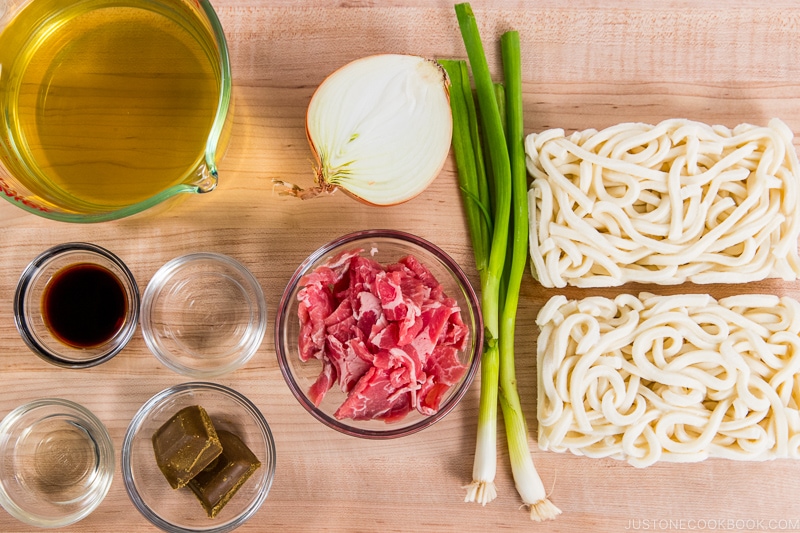
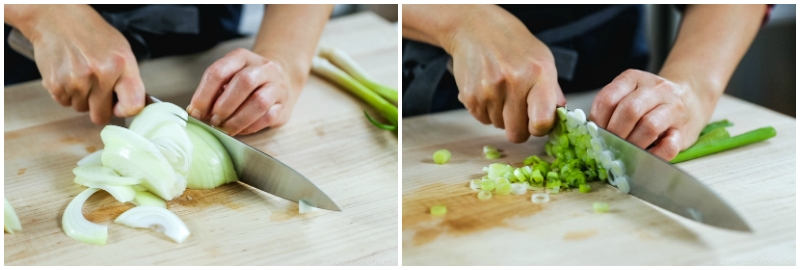
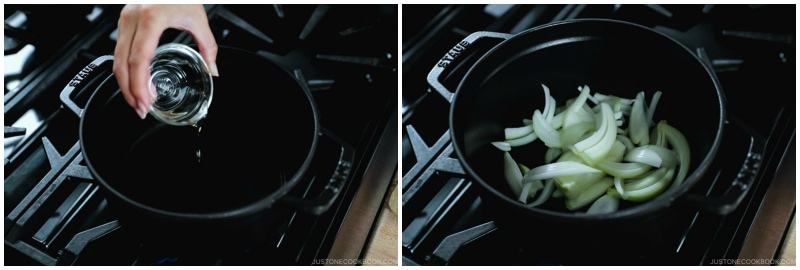
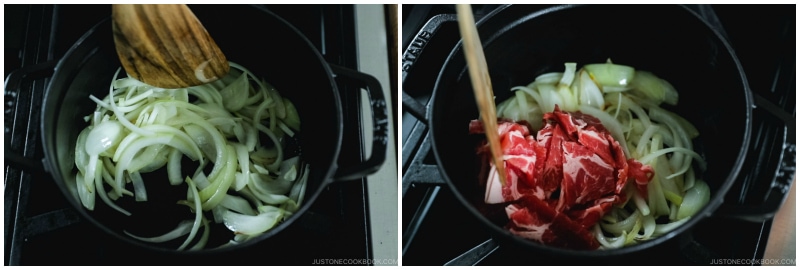
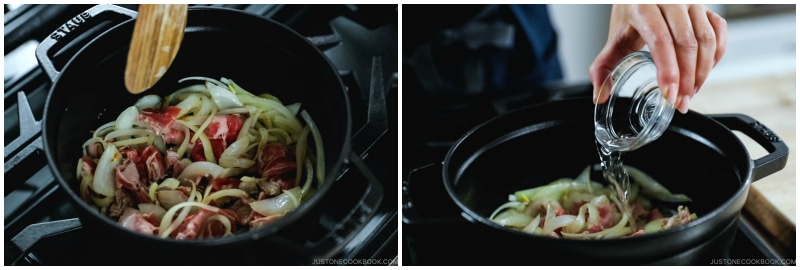
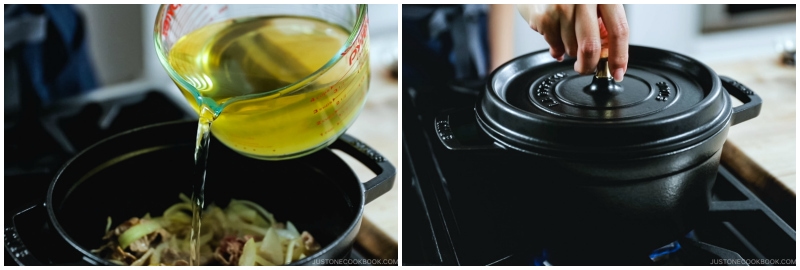
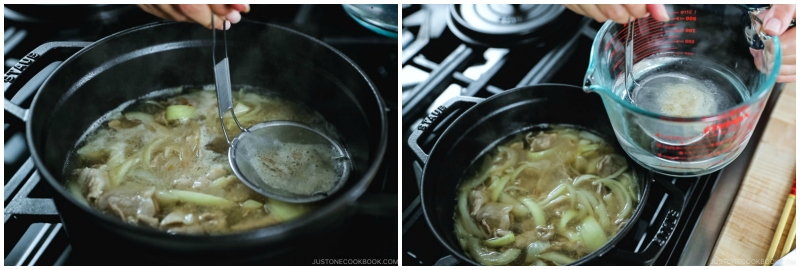
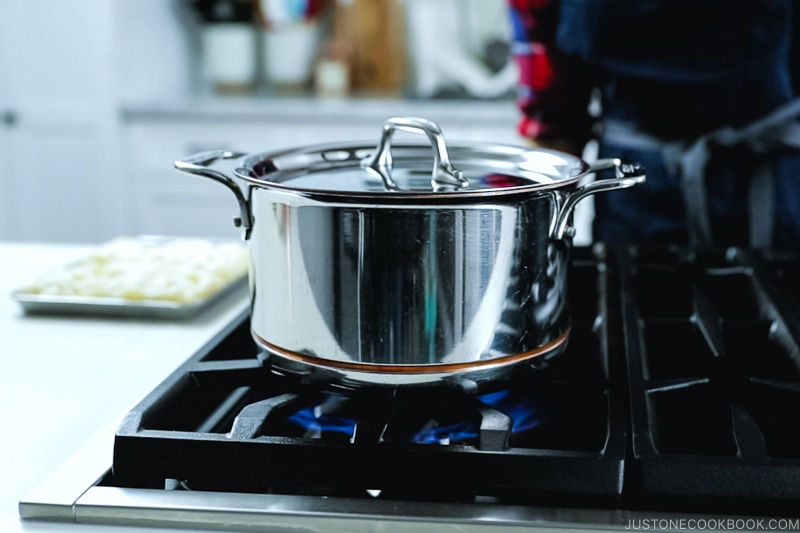
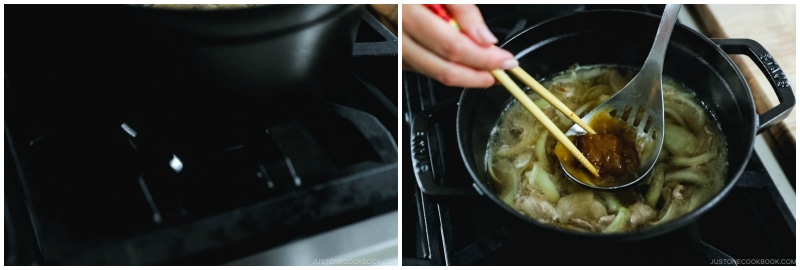
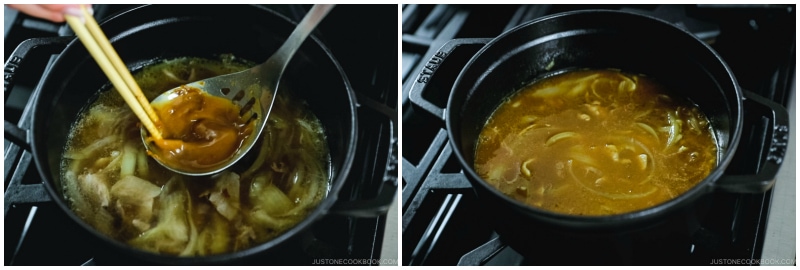
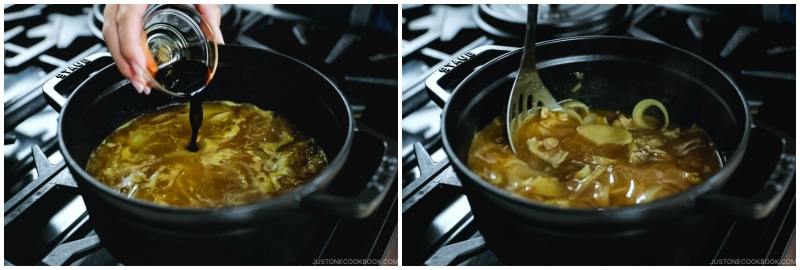
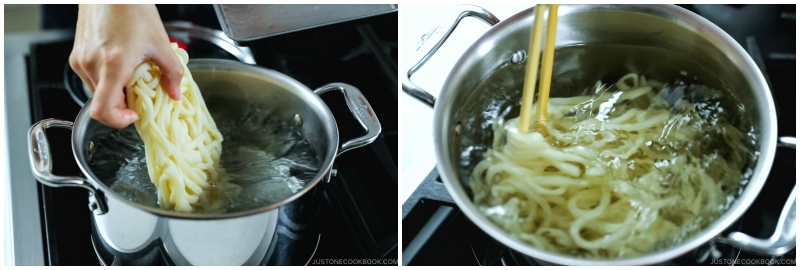
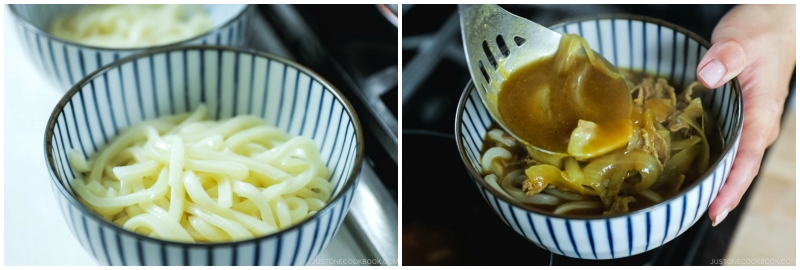











Hi Nami,
i made this curry udon today without meat and it was delicious and so easy! Will definitely make it again 🙂 🙂
Hi Raz! Thank you so much for trying Nami’s recipe!
We are so happy to hear you enjoyed the curry Udon! Happy Cooking!☺️
I was craving curry udon, and it turns out it’s a lot easier than I realized! Everything turned out great. I did add some carrots that I had and needed to get rid of. They do make things a little sweeter, so I’ll buy the spicier roux next time.
I live in Japan, but am still learning Japanese and the badics of Japanese cooking. I find your website to be an invaluable resource! Thanks for the recipe!
Hello, Rachel! Wow. We’re happy you liked Nami’s recipes and our website. Thank you very much for your kind feedback.
We hope you enjoy living in Japan and trying various foods!
Happy Cooking!
I didn’t have the right soup base, so I used better than boullion veggie and added trader Joe’s umami seasoning. It was a hit.
Hi Jen! We are glad to hear it worked out well for you!
Thank you so much for trying Nami’s recipe and sharing your experience with us. Happy Cooking!
Hi Nami,
Thank you for this recipe! I would like to add some vegetables into this dish. What do you recommend? I currently have these in the fridge: white mushrooms, cabbage, carrots, and potatoes. Would any of them go well with this dish?
Hello Sarah! You can include all of the vegetables you listed. Simply add them after step 5 and continue to simmer until all of the vegetables are tender.
We hope that you like the dish!
Thank you for trying Nami’s recipe! 🙂